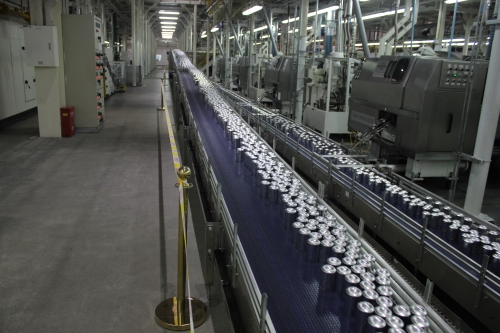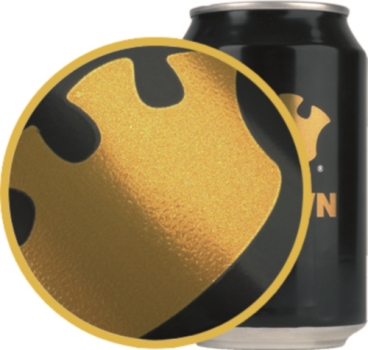On June 24, 2014, Crown Holdings released its 2013 Sustainability Report that showcases the environmental benefits of steel food cans and celebrates the culture of sustainability that has defined the company from its earliest days.
On July 2, 2014, Empac, European Metal Packaging, the association consisting of European producers of rigid metal packaging and their supply chain partners launched a website to help packagers to be better informed on metal packaging, and in particular its sustainability agenda.
Food News International asks Jozef Salaerts, President, Crown Asia Pacific Holdings Ltd. about his views on the relevance of metal cans in today’s market trends of going green, light weighting and designing for attractive shelf presence.
FNI: What is the market share of F&B products packaged in metal when compared to other packaging materials such as glass, paper, wood and plastics?
Salaerts: Recent reports, such as by Global Industry Analysts, are expecting the global metal packaging market to reach US$152 billion by 2018, with growth driven by Asia Pacific and Latin America.
At Crown, we are certainly seeing the proportion of products packaged in metal to be on the rise in Asia, especially for popular beverages such as energy drinks and nutraceutical beverages, as well as ready-to-drink coffees and teas.
At the same time, carbonated soft drinks are the most popular choice of beverage for entertaining at home and other social events in China, with beer ranking second.
Both of these categories are optimally served by metal packaging, in large part due to the inherent benefits it offers in terms of flavor retention, product protection and enhancement of the consumer experience as a whole.
FNI: What are the common needs such beverage products have that require metal cans?
Salaerts: Beverage brand owners value the unique benefits that metal packaging affords their products, most notably the metal can’s ability to keep products fresh for long periods of time.
Acting as a barrier that prevents the penetration of light and oxygen that can negatively impact the drink’s flavor, and providing a gas barrier for retention of carbonation in soft drinks, metal packaging effectively extends product shelf life.
When unopened, cans can be stored for long periods of time without any damage to product quality or compromise to safety.
FNI: In the logistics environment of lightweighting, reducing costs, how is metal a viable packaging material for beverage manufacturers in this logistics process?
Salaerts: Compared to other packaging formats, cans stand out as having exceptional supply chain efficiency.
The stackability of beverage cans, for example, maximizes logistical efficiency, and the aluminum can’s ergonomic design allows for easy handling in retail stores.
Beverage cans also fill the fastest on packaging lines and are extremely durable, significantly reducing the risk of product breakage during production and distribution.
They also require minimal refrigeration and ambient temperature control during shipment and storage, effectively reducing energy costs and carbon dioxide emissions.
Likewise,the latest developments in industry lightweighting has allowed canmakers to reduce the thickness of can walls but still provide a high-performance container; the aluminum beverage can today weighs 30% less than it did 35 years ago.
FNI: How is metal packaging considered by consumers a form of green packaging?
Salaerts: In keeping with overall environmental trends, the beverage industry is placing increasing importance on the use of sustainable packaging.
Metal contributes to sustainability savings in several ways, and as a packaging material offers advantages over alternative formats.
At the heart of metal’s sustainability story is the fact that it is 100% and infinitely recyclable.
Beverage cans are the most recycled drinks pack in the world, and consumers are well aware of the format’s environmental benefits.
The success of metal can recycling programs can be attributed to a long-term, well-established recycling infrastructure as well as the education and nurturing of consumer habits over time.
FNI: Consumers may associate metal to be heavier and more bulky than F&B products packaged in paper and plastics for example. How can this perspective be changed so that F&B manufacturers can be encouraged to package their products in metal?
Salaerts: Beverage cans are now some 30% lighter than in the past.
While industry efforts have been focused on reducing the thickness of can walls, material reduction can also be achieved by downsizing the neck of the can.
This trend can be seen in China, where there has been a marked shift from the 206 diameter cans traditionally used to package beverages to 202 diameter cans in recent years.
Companies are also always looking for ways to improve the consumer experience and innovative packaging is one way to offer brands more opportunities to differentiate their products on store shelves.
Convenience packaging is another way to help brands engage consumers, something for which the beverage can is aptly suited for.
Aluminum cans are portable and easily transported, and increasingly a consumer-preferred choice for their modern on-the-go lifestyles.
In addition to their durability, beverage cans are also tamper-resistant, a quality valued by many safety-conscious consumers today.
Beverage cans are available in a wide range of sizes and shapes, which addresses the demand for both for larger packaging and also smaller, single-serve containers.
To encourage further consideration and conversion, industry bodies and can manufacturers will continue to work together to educate consumers and brand owners about the numerous benefits of metal packaging.
FNI: There have been interesting designs that inspire F&B manufacturers. How can manufacturers create designs that are unique to their products locally?
Salaerts: When it comes to distinguishing beverage products, unique and high quality printing is one means to attract attention and connect with local consumers.
Advanced printing technologies are now paving the way for greater creativity and brand enhancement.
Appealing graphics and colors are an effective strategy, serving to distinguish brands, create a unique perception of a product and, ultimately, keep it at the top of consumers’ minds.
The beverage industry is also continuing to grow into new markets, as well as expanding within existing ones, and there are always opportunities for new innovations, including new sizes and slimmer formats.
At Crown, we have also been able to turn local ideas into global ones that we have successfully shared with customers around the world.
One notable innovation in the beverage sector has been the 360 End, which was originally developed for the 2010 FIFA World Cup in South Africa and was introduced to China in 2012.
An advanced technology that allows the entire can lid to be removed, turning the can into a drinking cup.
The 360 End was launched in conjunction with Anheuser-Busch InBev’s (AB InBev) Budweiser brand with a limited release on a 150ml can.
FNI: When designing packaging using metals, what are the considerations F&B manufacturers should pay attention to?
Salaerts: There are a number of elements to consider, including an evaluation of the material’s basic characteristics and expected performance.
Brand owners also need to have a clear goal of what they want to achieve, and who their target markets and demographic groups are; how will they interact with the product, in the supermarket and in their daily lives.
These will influence their final decision as to packaging size and shape.
At Crown, we always stress that is it imperative for brands to collaborate with their packaging supplier creatively, as well as technically, on a design to achieve the best final output.
Packaging partners should be able to offer printing recommendations that best support a brand’s objectives and achieve the desired visual effect.
Making sure that the design parameters are met, and that colors and finishes on the metal package are exactly as intended, also establishes the groundwork for consistent quality across the entire print run, which builds brand recognition and trust in the minds of consumers.
From a visual creative perspective, at the start of any project our first step is to evaluate the graphics and make recommendations for enhancing the size, quality, colors and so forth.
Scaling and balancing images for a rounded surface requires an extra layer of quality assurance.
Much of this has to do with transitioning the initial two-dimensional design concept to the three dimensions of a beverage can.












